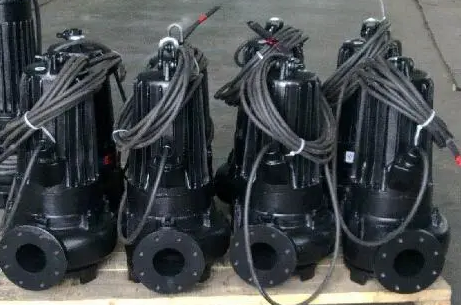Selection of sewage pump cables
The selection of sewage pump cables is a process that comprehensively considers multiple factors, including the power of the pump, installation distance, site environment, and cable specifications and types. The following are some specific selection points and suggestions:
1. Consider the power of the pump
The relationship between power and cable cross-sectional area: The greater the power of the pump, the greater the current required, so the cross-sectional area of the cable also needs to be increased accordingly to ensure that the cable can withstand the current and reduce heat and energy loss.
Specific specification selection:
In general, for sewage pumps with a power of 3000W and below, it is recommended to use cables of 3G2.5mm² and above.
If the power of the pump exceeds 3000W, it is recommended to use cables of 3G4mm² and above.
The specifications of the cable should be calculated and selected according to the specific power to ensure the carrying capacity and safety of the cable.

2. Consider the installation distance
The relationship between distance and cable cross-sectional area: The farther the distance between the pump and the power supply, the greater the resistance and voltage drop of the cable, so it is necessary to select a cable with a larger cross-sectional area to reduce voltage drop and energy loss.
Reserved length: If the installation distance is long, the cable needs to be reserved for a sufficient length to ensure that the cable will not be damaged by stretching or bending during use.
3. Consider the site environment
The impact of the environment on the cable: The temperature, humidity, chemical corrosion and other factors of the site environment will affect the selection of cables.
In high temperature environments, cables with good heat resistance should be selected.
In humid environments, cables with good moisture resistance should be selected, and waterproof connectors and cable glands should be considered.
In chemical corrosion environments, corrosion-resistant cables and cable sheaths should be selected.
Animal bites and aging issues: In some places, wires and cables may be bitten by animals or easily aged, and cables with anti-rat bite and anti-aging properties need to be selected.
4. Comply with national standards
Requirements for wire diameter: The wire diameter should comply with the requirements of national standards such as GB/T 5023.5 to ensure the electrical performance and safety performance of the cable.
Cable type and material: Select the appropriate cable type and material according to the site environment and needs, such as rubber sheathed soft cable (YCW type or YC type) for humid environments, stainless steel submersible pumps and corrosion-resistant submersible cables for corrosive media, etc.
5. Comprehensive consideration of cost performance
During the selection process, it is also necessary to comprehensively consider factors such as the price, performance and service life of the cable to ensure that the selected cable has the highest cost performance.




